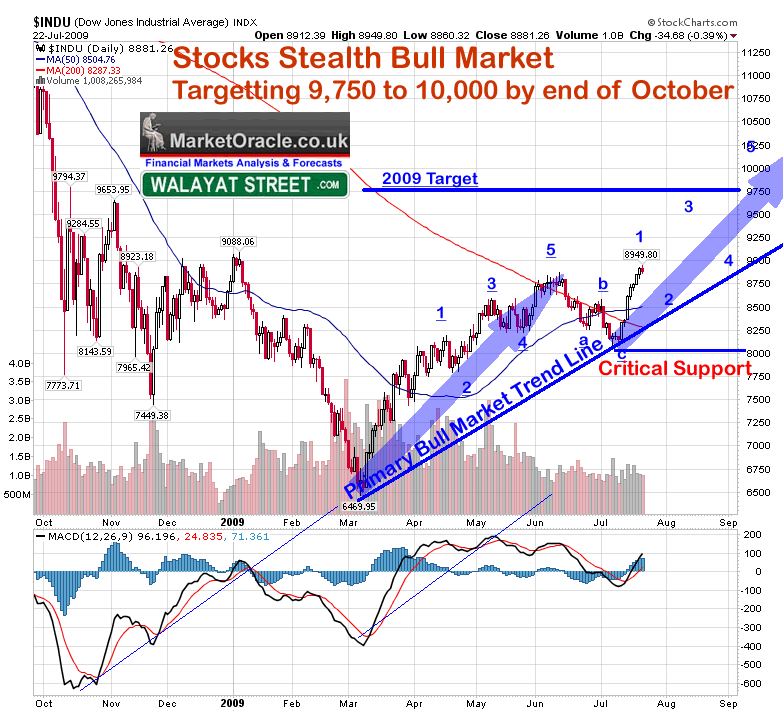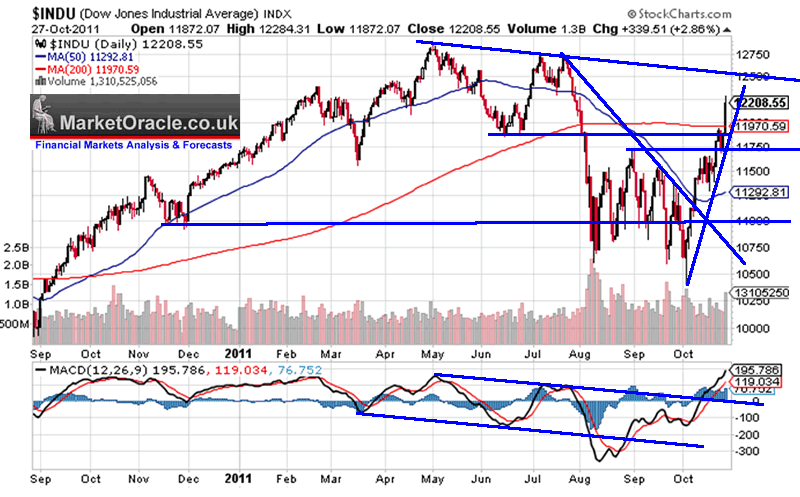How To Adjust Your Portfolio In A Bear Or Bull Market
Post on: 18 Июнь, 2015 No Comment

(Photo credit: Walter Rodriguez)
Investment success generally hinges on long-term thinking; however, most investors can’t help but worry about day-to-day shifts with their portfolios. Some of that worry is certainly justifiable given the recent increases in volatility over the last few years. Truth be told, both bull and bear markets are completely dissimilar animals and behave quite differently.
While investors shouldn’t completely change their long-term plans at the drop of a hat, making simple adjustments to a portfolio can help cushion losses or exaggerate gains. Even the smallest retail investor can benefit from making some tweaks to his or her portfolio allocations, depending on the market, and see results. Bull or bear, there are chances to move with the market’s flow.
Volatility Reigns Supreme
History has shown that the stock market and the economy move in cycles that repeat over and over; therefore, understanding the different stages of the economy can help guide your investment decisions. Market conditions come in two flavors: bull and bear. Each comes with their own set of nuances.
Bull markets are generally defined as periods when investors are showing immense confidence. While, technically, a bull market is a rise in value of the market of at least 20% – such as the huge rise of the Nasdaq during the tech boom – most investors apply a much looser meaning to the term.
Indicators of this confidence include rising stock prices and surges upward in major market indices like the venerable Dow Jones Industrial Average (NYSE:DIA). Conversely, safe-haven assets, like gold and bonds, will fall by the wayside in the face of a bull market. Additionally, the volume of shares traded is higher, and even the number of companies looking to tap the equities market via IPOs increases. Other economic factors such as consumer confidence, natural resource demand and better jobs data all play into this confidence.
On the flipside, bear markets are simply the opposite of a bull: a market showing a lack of conviction. Stock prices drift sideways or fall, indices fall and trading volumes are stagnant. At the same time, brokerage cash and bond balances generally are higher, headlines in your local newspaper’s business section turn pessimistic, and all in all, investors feel less confident about the near future. While a few up or down days don’t make a bull or bear market, two weeks or so of stock surges or declines could signal what kind of market we’ve now entered.
Adjusting for a Bear
Given that a bear market is all about a lack of confidence in the economy, investors should turn toward safe havens during this period. That could mean adjusting the percentage of bonds you hold upward. Essentially, a bond is a fancy IOU that companies and governments issue to fund their day-to-day operations or to finance specific projects.
Bonds are less likely to lose money than stocks are and can reduce your portfolio’s losses during stock market declines. Secondly, bonds pay interest regularly, so they can help generate a steady, predictable stream of income from your savings in bad times. Adding a fund like Vanguard Total Bond Market ETF (NYSE:BND) or iShares Barclays 20+ Year Treasury Bond (NYSE:TLT), which both bet on high quality bonds, can be used to quickly gain access to the asset class. (See The Advantages of Bonds.)
At the same time, focusing on blue chip stocks could prove fruitful in bear markets. Blue chips are better equipped to handle any possible downturns in the market and their bulk offers advantages in a slowing and uncertain economy. These advantages include their larger dividends, ability to acquire floundering smaller competitors and lower volatility. The Guggenheim Russell Top 50 Mega Cap (NYSE:XLG) is a prime play on larger firms.

Finally, there are some alternatives investors can bet on to tackle the bear. Shorting stocks through an inverse ETF or adding bear market mutual funds could provide short-term relief from dwindling stock prices. At the same time, betting on market volatility or its “fear” through a vehicle like the iPath S&P 500 VIX ST Futures ETN (NYSE:VXX) could make sense.
Let the Bull Run
Given all the euphoria that surrounds a bull, investors should feel confident to take on more risk. That means loading up on stocks with dodgier profiles. Certain sectors like energy, consumer discretionary and basic materials and/or commodities producers all do much better when the economy is cooking. These sectors tend to do exceptionally well during bull markets; overweighting them through various sector ETFs is a good idea.
Then there are emerging markets to consider. Given the fact that many of these nations are still going through their “growing pains,” stocks located in China or Brazil are considered a riskier bet than, say, multinationals in the United Kingdom or Germany. As such, funds like the iShares MSCI Emerging Markets Index (NYSE:EEM) tend to surge when the bull is running.
Finally, even in fixed income there are bull market plays. High-yield or junk bonds’ return profiles have more in common with stocks than traditional bonds. At the same time, high-yielding real estate investment trusts (REITs) or pipeline master limited partnerships (MLPs) offer a chance to participate in rising stock prices as well as collect big dividend checks. A fund like the SPDR Dow Jones REIT (NYSE:RWR) is perfect bull market fodder.
The Bottom Line
While investors shouldn’t feel compelled to change their portfolios radically in reaction to the market’s daily moves, small adjustments in the face of a bull or bear market could be a prudent move. Adjustments to how the market perceives risk could save investors from catastrophic losses or help create exaggerated gains.














